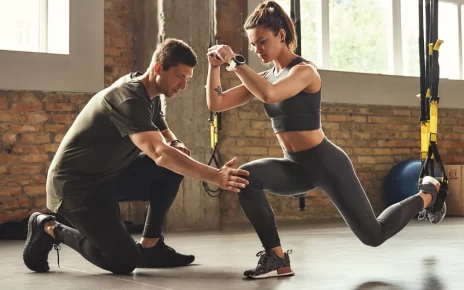Let’s be honest. When you live an active life, the focus is usually on the action. The miles run, the weights lifted, the laps swum. We chase that endorphin rush, that feeling of accomplishment. But here’s the deal—the real magic, the part where your body actually gets stronger and faster, happens when you’re not working out. Recovery isn’t just lying on the couch (though that has its place). It’s an active process. It’s the silent partner to your sweat sessions.
If you’re constantly feeling sore, fatigued, or just a bit “off,” your recovery game probably needs a tune-up. Think of your body like a high-performance car. You wouldn’t drive it hard every day without ever changing the oil or checking the tires, right? Well, your muscles, joints, and nervous system need the same thoughtful maintenance. So, let’s dive into the best recovery techniques and tools to keep you moving smoothly.
The Foundation: Non-Negotiable Recovery Basics
Before we get to the fancy gadgets, you’ve got to master the fundamentals. These are the pillars that no amount of technology can replace. Seriously, skip these and you’re just putting a band-aid on a deeper issue.
Sleep: The Ultimate Performance Enhancer
This is, without a doubt, the most powerful recovery tool you have. During deep sleep, your body releases human growth hormone (HGH), which is essential for muscle repair and growth. Your brain also clears out metabolic waste. Skimping on sleep is like trying to build a house without giving the cement time to dry. You’re just setting yourself up for a collapse.
Aim for 7-9 hours of quality sleep per night. Create a dark, cool environment and try to avoid screens an hour before bed. It’s a simple change with massive returns.
Nutrition and Hydration: Fueling the Repair Process
You break down muscle during exercise. You rebuild it with food. After a tough session, your body is screaming for nutrients to start patching things up. A combination of protein and carbohydrates within that “golden hour” post-workout can make a world of difference in how you feel the next day.
And water? Well, dehydration thickens your blood, making it harder for nutrients to travel to your muscles and for waste products to be cleared away. It’s like trying to clean a messy room with the lights off and your hands tied. Drink water consistently throughout the day, not just when you’re thirsty.
Active Recovery & Mobility Techniques
Okay, so the basics are covered. Now, what about those days when you’re sore but don’t want to be completely sedentary? That’s where active recovery comes in.
Foam Rolling and Self-Myofascial Release
Ah, the foam roller. It looks innocent enough, but it can bring a grown adult to tears. In a good way! Foam rolling is a form of self-massage that targets myofascial adhesions—basically, knots in your muscles and the connective tissue (fascia) that surrounds them. By applying pressure, you’re increasing blood flow and improving tissue elasticity.
Don’t just roll mindlessly. Spend 30-60 seconds on each major muscle group—quads, hamstrings, glutes, lats, and calves. When you find a tender spot, pause and take a few deep breaths. It shouldn’t be excruciating pain, but a “good hurt.”
Dynamic and Static Stretching
There’s a time and place for each. Dynamic stretches (like leg swings, torso twists, and cat-cow poses) are best for a warm-up. They get the blood flowing and prepare your body for movement.
Static stretching (holding a stretch for 30-60 seconds), on the other hand, is ideal for your cool-down or on a separate recovery day. This is where you can gently improve your flexibility and ease muscle tension. The key word is gentle. No bouncing.
Modern Recovery Tools: The Tech Side of Healing
Technology has given us some incredible tools to enhance our recovery protocols. While they’re supplements to the basics, not replacements, they can be game-changers.
Percussion Massage Guns
These devices have exploded in popularity, and for good reason. They deliver rapid, concentrated pulses of pressure deep into the muscle tissue. They’re fantastic for targeting specific areas of tightness more effectively than a foam roller can. Think of it as a deep-tissue massage you can do yourself. Use it on sore muscles after a workout, but avoid bones, joints, and your neck.
Compression Boots
If you’ve ever seen someone looking like they’re wearing inflated robot pants, you’ve seen compression boots. These sleeves sequentially inflate and deflate, pushing fluid (like lymph) up from your extremities. This helps reduce swelling and flush out metabolic byproducts like lactic acid. They feel incredible after a long run or a heavy leg day, though they are a more significant investment.
Contrast Water Therapy (Hot/Cold)
This one is old-school but backed by science. Alternating between hot and cold water causes your blood vessels to rapidly dilate and constrict. This “pumping” action is thought to help reduce inflammation and stimulate healing. You don’t need a fancy setup—just end your shower with 30-60 seconds of cold water, followed by 2-3 minutes of warm, and repeat a few times. It’s bracing, but you’ll feel amazing afterward.
Building Your Personal Recovery Plan
So, with all these options, where do you start? You don’t need to do everything all at once. Listen to your body. Here’s a simple way to think about it based on your daily needs:
| If you feel… | Try this… |
| Generally sore all over | Focus on sleep, hydration, and maybe a session with the percussion gun or foam roller on large muscle groups. |
| One specific “knot” or tight spot | Targeted foam rolling or massage gun work on that area, followed by gentle static stretching. |
| Heavy and fatigued legs | Light active recovery (like a walk or slow bike ride), compression gear, and contrast therapy. |
| Just mentally drained | Sometimes the best recovery is true rest. A yoga session, meditation, or simply reading a book can be just as important. |
The goal is to make recovery a consistent part of your routine, not something you only think about when you’re injured. It’s about being proactive, not reactive.
In the end, honoring your body’s need to repair and rebuild isn’t a sign of weakness. It’s the mark of a smart, seasoned athlete. The work you put in during your downtime is what allows you to push harder, go longer, and truly enjoy the active life you’ve built. So, the next time you finish a workout, your first question shouldn’t be “What’s next?” but rather, “How will I recover?”





